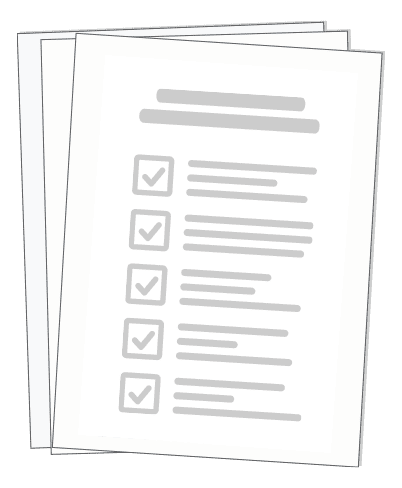
FREE Download For You
Download Your
Blog Optimization Checklist
Hey there, fellow blogger! You’ve got a story to tell, and I’m here to help you find the perfect stage. In this post, we’ll explore the wild and wonderful world of free blogging platforms. Because let’s face it, when you’re just starting out, every penny counts!
I’ve been around the block a time or two, and I know firsthand that choosing the right platform can make or break your blogging journey. So, I’ve done the legwork for you and rounded up the cream of the crop. Get ready to dive into a smorgasbord of options, from the tried-and-true WordPress to the sleek and stylish Medium.
But wait, there’s more! We’ll also dish on the pros and cons of each platform, so you can make an informed decision. Whether you’re a tech whiz or a total newbie, there’s a free blogging platform out there with your name on it. So, grab a cup of coffee, and let’s find your perfect match!
Table of Contents:
- List of the Best Free Blogging Platforms in 2024
- Pros and Cons of Using Free Blogging Platforms
- How to Choose the Right Free Blogging Platform for Your Needs
- Step-by-Step Guide to Setting Up Your Free Blog
- Tips for Growing Your Audience with a Free Blog
- Alternatives to Free Blogging Platforms
- Conclusion
List of the Best Free Blogging Platforms in 2024
Choosing the right free blogging platform can feel overwhelming. There are so many options out there, each with their own pros and cons. I’ve been blogging for over a decade now, and I’ve tried my fair share of platforms. Some were great, others not so much. But through all that trial and error, I’ve narrowed it down to the best of the best. In my opinion, the top free blogging sites for 2024 are:
- WordPress.com
- Wix
- Medium
- Blogger
- Tumblr
- Ghost
- Substack
- SITE123
Each of these free blogging platforms offers something unique. WordPress.com is the most popular and customizable. Wix is drag-and-drop easy. Medium has a built-in audience. And Substack is perfect for newsletter-style blogs.
WordPress.com
WordPress.com is far and away the most popular and best-supported free blogging platform. If you’re looking for a free platform that’ll give you everything you need to start blogging, then WordPress.com is definitely the site for you.
I’ve used WordPress.com for several of my blogs over the years. It’s incredibly versatile and user-friendly, even if you have zero tech skills. Plus, there are thousands of free themes and plugins to choose from. The only downside is that the free version does have some limitations, like not being able to use a custom domain name. But overall, it’s my top pick for the best free blogging site.
Wix
Wix offers truly free forever plans you can use to design a blogging website and publish your posts. However, truly free blogs on Wix offer limited functionality, often limiting the amount of storage you can use and the number of pages you can publish.
If you want a free blog that’s ridiculously easy to set up, Wix is the way to go. You can create a professional-looking blog in minutes, no coding required. The drag-and-drop editor makes customizing your blog’s design a breeze. And there are plenty of templates to choose from. Just keep in mind that the free plan does come with Wix ads and limited storage. But it’s still a great option for beginners or hobby bloggers.
Medium
Free blogging platforms like Medium offer an easy way to directly start writing your blogs on their platform without any upfront costs. They are great for beginners who want some visibility on their blogs or someone who just does it as a hobby.
Medium is a bit different from other blogging platforms. It’s more of a community where anyone can publish articles. The big advantage of Medium is that it has a built-in audience. If you write quality content, there’s a good chance people will find and read it. The downside is that you have very little control over the design and branding of your blog. And you can’t run ads or sell products directly from your Medium blog. But if you’re just looking to share your thoughts and connect with readers, Medium is a great free option.
Pros and Cons of Using Free Blogging Platforms

Free blogging platforms are a great way to get started with blogging. They’re easy to use, require no upfront investment, and can help you build an audience. But they also come with some limitations and drawbacks. Before you choose a free platform for your blog, it’s important to understand the pros and cons.
Limited Customization and Design Options
Free blogging platforms come with certain limitations in design, domain name branding, and monetization strategies compared to their paid counterparts.
One of the biggest downsides of free blogging sites is that you have limited control over the look and feel of your blog. Most free platforms offer a selection of templates or themes to choose from. But if you want to fully customize your blog’s design, you’ll likely need to upgrade to a paid plan. This can be frustrating if you have a specific vision for your blog’s branding and aesthetic. With a free platform, you may have to settle for a generic look. Another potential drawback of free blogging platforms is the lack of monetization options. If you want to make money from your blog through ads, affiliate links, or selling products, you may be limited on a free platform. Some don’t allow any monetization at all, while others take a cut of your earnings. This isn’t necessarily a deal-breaker, especially if you’re just blogging as a hobby. But if your goal is to turn your blog into a business, a free platform may not be the best long-term solution.
Restricted Features and Functionality
Free blogging sites also tend to have limited features compared to their paid counterparts. For example, you may not be able to install custom plugins, access advanced analytics, or use certain marketing tools. This can make it harder to grow and manage your blog over time. Some free platforms also limit the amount of storage space or bandwidth you get. So if your blog starts to get a lot of traffic, you may need to upgrade to a paid plan. Many free blogging platforms make money by placing ads on your blog. This means you have no control over what ads appear or how they look. In some cases, the platform’s branding may also be prominently displayed on your blog. This can make your site look less professional and detract from your own branding. While ads and branding are a necessary trade-off for getting a free platform, they can be annoying for both you and your readers.
Benefits of Simplicity and Ease of Use
Free blogging platforms can be a practical and cost-effective stage for a range of content creators, from aspiring writers and hobbyists to professionals and small businesses. These platforms can be used to create basic blogs, diaries and portfolios, whether you’re focusing on personal stories, niche interests or commercial content.
Despite the limitations, free blogging platforms do have some significant benefits – namely, simplicity and ease of use. For beginners or those who are less tech-savvy, a free platform can be a great way to start blogging without getting overwhelmed. Most have user-friendly interfaces and don’t require any coding knowledge. Free platforms also handle all the technical aspects of running a blog, like hosting, security, and software updates. This can save you a lot of time and hassle, especially if you’re not particularly interested in the behind-the-scenes stuff. So while a free blogging site may not be the best long-term solution for everyone, it can be a great way to dip your toes into the blogging world.
How to Choose the Right Free Blogging Platform for Your Needs

With so many free blogging platforms to choose from, how do you know which one is right for you? The answer depends on your specific needs and goals as a blogger. Here are some key factors to consider when choosing a free platform:
Identify Your Blogging Goals and Objectives
Whether you should go for a free or paid blogging platform completely depends on your goals, budget, and the customization and control you wish to have.
Before you start comparing platforms, take some time to think about why you want to start a blog and what you hope to achieve with it. Are you blogging just for fun, or do you want to build a personal brand? Are you hoping to make money from your blog eventually? Do you need specific features like e-commerce or email marketing integration? Answering these questions will help you narrow down your options and choose a platform that aligns with your goals. Some free blogging sites are more beginner-friendly than others. If you’re not particularly tech-savvy, you may want to choose a platform with a simple, intuitive interface. On the other hand, if you have some web design or coding experience, you may prefer a platform that gives you more control over the look and feel of your blog. Be honest with yourself about your technical skills and choose a platform that you feel comfortable using.
Evaluate the Platform’s Features and Limitations
The main factors to consider for free platforms are the level of customization you’ll have, how easy it is to use and the potential you’ll have to grow your audience and your business. Different blogging platforms let you focus on different aspects of the blogging process.
Once you’ve identified a few potential platforms, take a closer look at their features and limitations. Some key things to consider:
- Design options and customization
- SEO tools and settings
- Monetization options
- Analytics and reporting
- Social media integration
- Storage space and bandwidth limits
Make a list of the features that are most important to you and use that to guide your decision. Even if you don’t have a lot of technical skills, you probably want your blog to look and feel unique. After all, your blog is an extension of your personal brand. Look for a free blogging platform that offers a good selection of customizable themes or templates. Ideally, you should be able to change things like colors, fonts, and layout without needing to code. Some platforms also let you use your own custom domain name, which can make your blog look more professional and established. Just keep in mind that this usually requires upgrading to a paid plan.
Check for Monetization Opportunities
If you think you might want to monetize your blog at some point, look for a platform that supports your preferred monetization methods. Common ways to make money from a blog include:
- Advertising (e.g. Google AdSense)
- Affiliate marketing
- Sponsored content
- Selling digital products
- Offering services or coaching
Not all free blogging sites allow these monetization options, so it’s important to check before you commit to a platform.
Read Reviews and Compare Platforms
There is no one-size-fits-all when it comes to free blogging platforms; some cater more to beginners, while others offer more advanced features that experts prefer. Searching for the top free blogging platform? Here’s a brief overview of the best blogging sites, emphasizing their unique features. For detailed insights, check out the full review.
Finally, don’t just take my word for it – do your own research and read reviews from other bloggers. Look for reviews that compare different free blogging platforms and highlight the pros and cons of each. Pay attention to reviewers who have similar needs and goals to your own. You can also join blogging communities or forums to ask for recommendations and advice from more experienced bloggers. At the end of the day, the right free blogging platform for you is the one that best meets your needs and helps you achieve your blogging goals. Don’t be afraid to experiment and try out a few different platforms before settling on one.
Step-by-Step Guide to Setting Up Your Free Blog

Starting a blog doesn’t have to be complicated or expensive. With the right free blogging platform, you can have your blog up and running in no time. The first step is deciding which popular blogging platform you want to use. Some truly free options include Wix, WordPress.com, and Weebly. These platforms offer free plans that let you design your blog and publish posts without any upfront costs. Just keep in mind that free plans usually come with limitations on storage, pages, and features.
Create Your Account and Profile
Once you’ve picked your platform, it’s time to sign up for a free account. This usually just requires an email address and password. After registering, take a few minutes to set up your profile. Add a profile picture and short bio to introduce yourself to readers. This helps create a personal connection right from the start. Next, browse the free themes or templates offered by your platform. These pre-designed layouts make it easy to get a professional-looking blog without any technical skills or web design experience. Choose a theme that matches your blog’s topic and desired aesthetic. If you’re not sure, start with something simple and clean. You can always change it later.
Customize Your Blog’s Design and Layout
With your theme selected, it’s time for the fun part – customizing. Most blogging platforms let you personalize colors, fonts, headers, and other design elements without needing to code. Add your own logo or photos to make it feel like home. Rearrange the layout to highlight your most important content. Just don’t go overboard – a cluttered blog is hard to read. Now that your blog is set up, you’re ready to start writing. Craft a compelling headline to grab attention. Break up text with subheadings, bullet points, and images to improve readability. Close with a strong call-to-action, whether that’s encouraging comments, sharing the post, or signing up for your email list. When you’re happy with your draft, hit publish and share that link.
Promote Your Blog on Social Media
Don’t wait for readers to stumble upon your blog. Actively promote your posts on social media to drive traffic and expand your audience. Share each new post on Facebook, Twitter, Instagram, and any other social networks where your target readers hang out. Engage with people who comment to start building a community around your blog.
Tips for Growing Your Audience with a Free Blog
You’ve started your free blog – now it’s time to get more eyeballs on your content. While it takes time to build a substantial readership, there are some key strategies to speed up the process. The most important thing is to publish content that your target audience actually wants to read. Don’t just churn out short, generic posts to meet an arbitrary posting schedule. Take the time to write in-depth, valuable content that showcases your unique voice and expertise. Aim to post at least once a week to keep readers coming back.
Optimize Your Blog for Search Engines
What’s the point of writing great content if no one can find it? Optimizing your blog for search engines like Google can help your posts rank higher and attract more organic traffic. This includes researching relevant keywords, using those keywords naturally throughout your post, crafting compelling meta descriptions, and building high-quality backlinks. It’s not about gaming the system, but making it easy for search engines to understand and recommend your content. Blogging isn’t a one-way broadcast – it’s a conversation. Encourage readers to leave comments by asking questions and inviting feedback at the end of your posts. When readers do comment, take the time to thoughtfully reply and continue the discussion. This back-and-forth interaction helps create a sense of community and loyalty around your blog.
Collaborate with Other Bloggers and Influencers
No blogger is an island. Look for ways to collaborate and cross-promote with other bloggers and influencers in your niche. This could include guest posting on each other’s blogs, co-hosting webinars or social media live streams, or even just regularly sharing and commenting on each other’s content. These relationships expose you to new audiences and lend more credibility to your own blog. Social media isn’t just for sharing your own content – it’s a powerful tool for connecting with potential readers and driving them back to your blog. Optimize your social profiles with a clear link to your blog. Share a mix of your own posts and curated content that your target audience will find valuable. Engage with other users’ posts to get on their radar in a genuine, non-spammy way.
Analyze Your Blog’s Performance and Adjust Your Strategy
One of the best things about blogging is that you can see what’s working and what’s not in real-time. Most blogging platforms integrate with Google Analytics or offer their own built-in stats. Check which posts are getting the most traffic and engagement to inform your future content strategy. See which social media and referral sources are driving the most clicks. Use this data to double down on what’s working and ditch what’s not moving the needle.
Alternatives to Free Blogging Platforms
While free blogging platforms are a great way to get started, they do come with some limitations. As your blog grows, you may want to consider alternatives that offer more flexibility and control. One popular option is to use WordPress.org to start a blog. This open-source software is free to use, but you’ll need to pay for your own web hosting and domain name. The tradeoff is that you have complete ownership of your blog and can customize every aspect of it with WordPress themes and plugins. Many bloggers start on a free platform but eventually migrate to WordPress.org as their blog becomes a more serious endeavor. Another option is to use a website builder like Squarespace or Wix. These platforms aren’t free, but they offer an all-in-one solution with hosting, domains, templates, and support included for a monthly fee. While not as flexible as WordPress.org, website builders can be a good middle ground between the limitations of free platforms and the responsibilities of self-hosting. It’s all about finding the right fit for your needs and goals.
Conclusion
Well, there you have it, folks – the inside scoop on the best free blogging platforms out there. We’ve covered the heavy hitters like WordPress and Blogger, as well as some rising stars like Medium and Ghost. By now, you should have a pretty good idea of which platform will work best for your unique blogging needs.
Remember, choosing a blogging platform is just the beginning. The real magic happens when you start sharing your voice with the world. So, don’t be afraid to experiment, get creative, and let your personality shine through in your posts.
Whether you’re a seasoned pro or a blogging newbie, there’s never been a better time to start your journey. With these free platforms at your fingertips, you’ve got everything you need to build a thriving online presence. So, what are you waiting for? Go forth and blog like nobody’s business!

FREE Download For You
Download Your
Blog Optimization Checklist




